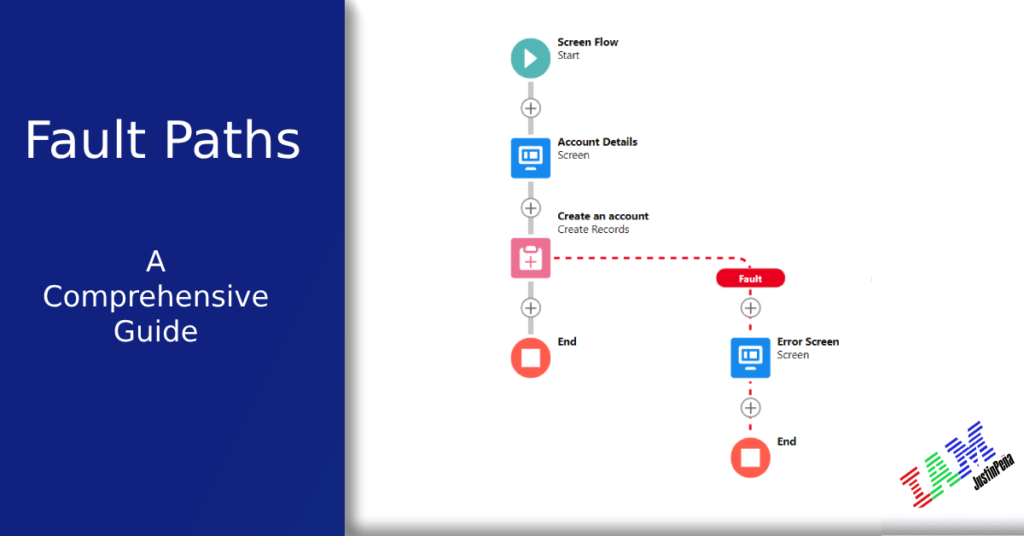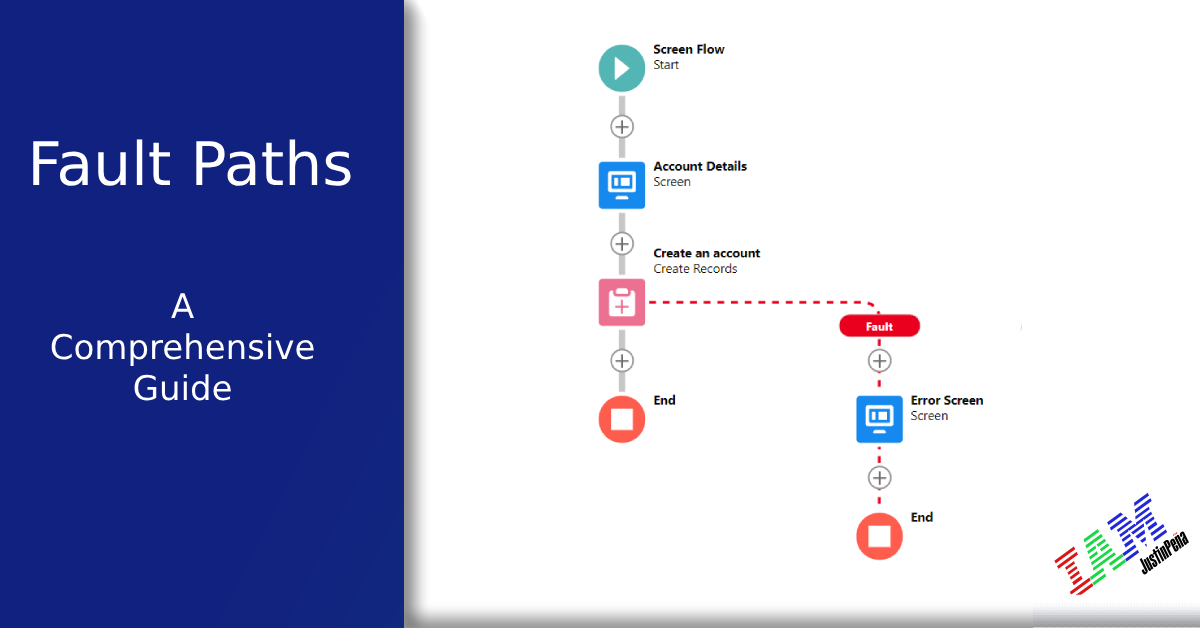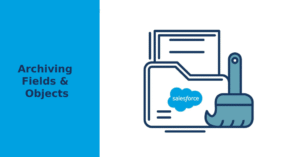
Fault Paths in Salesforce Flows are integral for those desiring to excel in Salesforce, a top-notch CRM platform. In this enlightening 2024 guide, we’re delving deep into every nuance, aiding you to adeptly handle salesforce flow errors and refine flow elements.
Introduction to Salesforce Fault Paths
Mastering Fault Paths in Salesforce Flows allows users to reach unprecedented levels of efficiency and automation in business processes. It plays a pivotal role in Salesforce Flows, enabling the smooth management of errors and enhancing automation effectiveness.

Why Use Fault Paths in Salesforce Flows?
Fault Paths in Salesforce Flows empower users to:
- Identify errors quickly: Rapid identification of errors is pivotal, allowing for immediate corrective actions which mitigate negative repercussions on the overall workflow and user experience.
- Resolve errors efficiently: By resolving errors efficiently, you maintain workflow continuity and operational integrity, preventing prolonged disruptions and ensuring sustained productivity.
- Boost the overall robustness of the flow: Enhancing the robustness of the flow ensures it remains resilient against unforeseen issues, optimizing its performance and reliability in diverse operational scenarios.
Deepen your grasp of Incorporating Salesforce Fault Paths to Flows here. Understanding these facets is key to leveraging the full potential of Salesforce Flows, allowing for a more streamlined and error-resistant utilization of this powerful tool.
Adding a Static Resource (Salesforce Flow Error Handling)
Integrating a static resource in Fault Paths is essential for customizing error messages and optimizing communication. Discover the versatility of static resources such as images, zip files, and JavaScript in Salesforce. By leveraging static resources, users can enrich the communicative elements of their flows, enabling more dynamic and responsive interactions. This infusion of resources enhances the user experience, offering a more tailored and intuitive interface for users navigating through Salesforce Flows.
Dive deeper into Salesforce objects with these insightful articles.
Incorporating Salesforce Fault Paths to Flow Elements
Embedding Fault Paths into flow elements acts as a safety mechanism, ensuring the rapid identification and rectification of errors, and maintaining the flow’s integrity and performance. This practice is akin to providing your flows with a shield, guarding against potential disruptions and maintaining a seamless user experience. The incorporation of Fault Paths not only preserves the functionality of the flows but also elevates their reliability and robustness, fostering a more resilient operational environment.
For more detailed instructions on creating scheduled flows in Salesforce, refer here.
Testing Custom Error Messages in Salesforce Flows
Meticulous testing of custom error messages is paramount. A well-tested error message guarantees precision and clarity in error detection and resolution processes. By ensuring that each message accurately represents the occurring issues, you are one step closer to achieving flawless flow operations and user experiences. Additionally, it fosters a more user-friendly environment, allowing for more intuitive interaction and comprehension of the flow’s functionalities and responses.
Find out more about how to test your flows thoroughly for optimal results.
Saving SFDC Flow Errors in a Custom Object
Storing flow errors in a custom object is foundational for systematic error review and analysis, acting as a data reservoir and assisting in refining flows and elevating automation accuracy. By creating a dedicated custom object to capture and store these errors, users can easily track, review, and analyze patterns of issues that arise within their flows. This not only aids in quick identification and resolution of recurrent problems but also provides valuable insights into areas that might need optimization or enhancement.
A custom object for errors can be tailored to capture specific details such as error messages, timestamps, user interactions, and related flow elements, making it a comprehensive tool for error management. This systematic approach facilitates better documentation and transparency, allowing teams to collaborate more effectively in troubleshooting and improving the flow designs. Additionally, leveraging custom objects for error tracking can streamline the process of auditing and compliance, ensuring that all errors are logged and addressed in a structured manner.
Moreover, this practice empowers administrators and developers to make data-driven decisions when refining and optimizing their Salesforce flows. By analyzing the stored error data, they can identify bottlenecks, understand the root causes of failures, and implement more robust solutions to prevent future occurrences. This continuous improvement cycle enhances the overall reliability and performance of Salesforce automations, leading to smoother operations and higher user satisfaction.
Explore more about Salesforce custom objects here.
For extensive tutorials and insights on Salesforce, consider visiting Trailhead Salesforce and Salesforce’s official YouTube channel.
Salesforce Fault Paths Conclusion
Fault Paths in Salesforce Flows are indispensable for optimizing error management and enhancing workflow efficiency. By mastering these paths, users can swiftly identify and resolve issues, integrate custom error messages, and utilize static resources for a more dynamic user experience. Storing errors in custom objects and thorough testing ensures precise error detection and resolution, fostering a robust and user-friendly Salesforce environment. Embrace these strategies to achieve greater operational excellence and transform your business processes, leveraging the full potential of Salesforce Flows. For further insights, explore Trailhead Salesforce and Salesforce’s official YouTube channel.
Salesforce Fault Path FAQs
❓What is the significance of understanding Fault Path in Salesforce Flow?
Understanding Fault Path is pivotal as it enables the efficient handling and resolution of errors within the flow, ensuring seamless automation.
❓How does adding a Static Resource in Fault Path benefit users?
It aids in the customization of error messages, enhancing clarity and communication within the flow.
❓Why is it essential to test custom error messages in a flow?
It is crucial to ensure the accuracy of the message and validate the flow’s overall functionality, facilitating the efficient identification and resolution of issues.
❓Can storing flow errors in a custom object enhance flow precision?
Yes, it acts as a repository for flow errors, aiding in their systematic review and analysis, which in turn refines the flow and improves automation precision.




